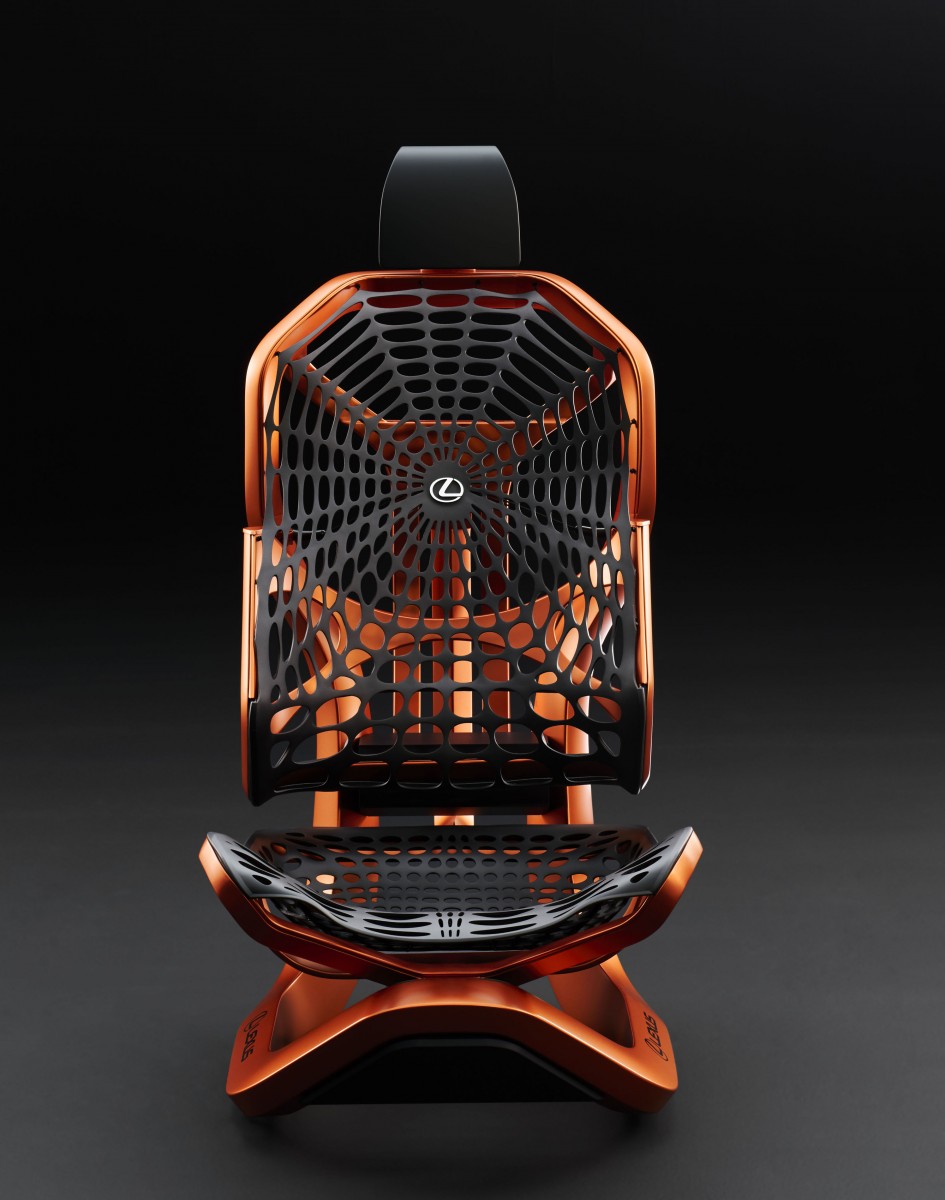Lexus Kinetic Seat Concept rethinks automotive seating

The Lexus Kinetic Seat Concept uses synthetic spider silk netting, rather than traditional cushioning, for support.
Beyond the addition of temperature control, improvements in support and cushioning and built-in massagers on some luxury models, vehicle seating hasn’t experienced any revolutionary change in quite some time. But Lexus is shaking things up with the introduction of the Kinetic Seat Concept.
Although it looks like a Halloween prop with its black and orange colour scheme and spider web appearance, the Lexus Kinetic Seat is real. Rather than conventional upholstery, fibre netting is used, radiating out from the centre of the two sections. Flexible in nature, the net conforms to the occupants shape and effectively distributes the load to allow for comfortable prolonged sitting.

In addition to better load dispersal, the seat is built to simulate the stabilizing effect of a human spine. Both the backrest and cushion accommodate and move in accordance with a person’s individual body shape and vehicle momentum. This helps to mitigate the head “bobbing” effect during driving, particularly for passengers, thus keeping the field of vision steady and providing an overall better ride.
Lexus forwent using petroleum-derived materials and instead chose to go with an environmentally friendly synthetic spider silk — called QMONOS, made by Japanese advanced biomaterials company Spiber — to make the threading for the backrest. The material is comprised primarily of protein made from a microbial fermentation process, which is then spun into the durable and strong final form boasting excellent shock absorbance properties.

The automaker staged a world premier of the Kinetic Seat at the start of the 2016 Paris Motor Show, and can be seen at a standalone display as well as inside the Lexus UX Concept luxury compact SUV.

